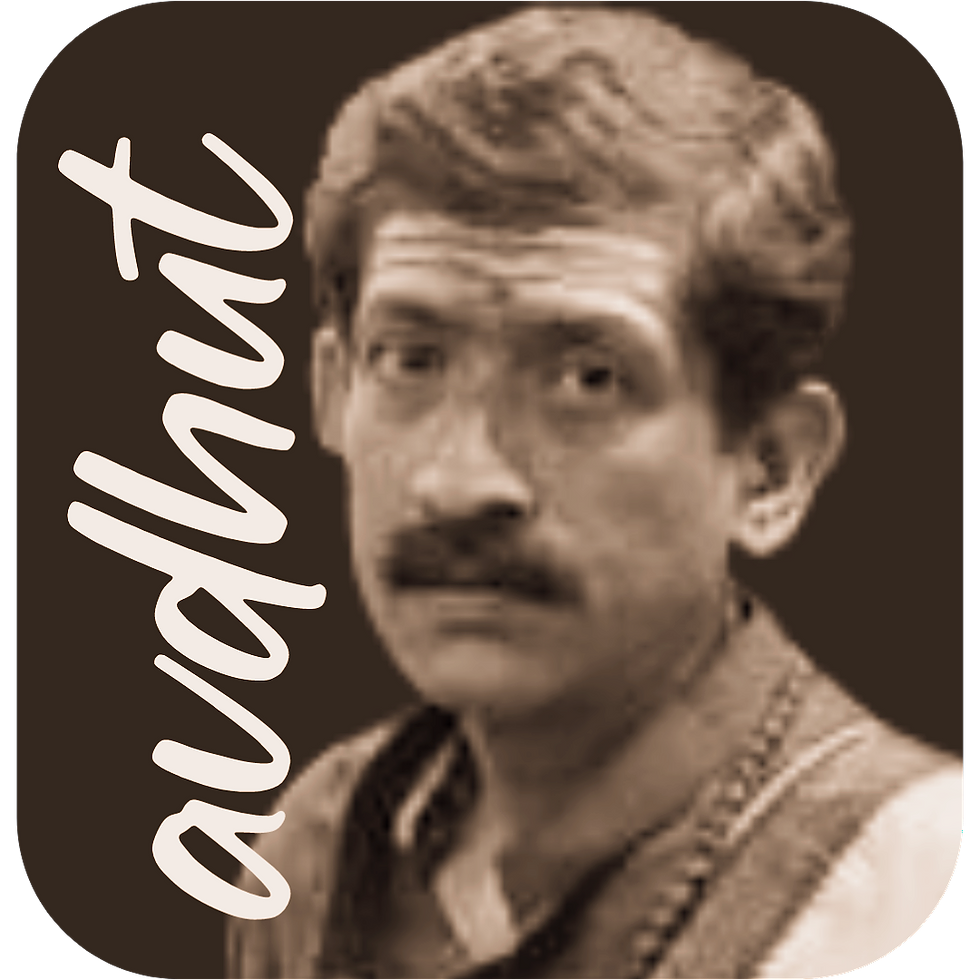Avdhut throws light on Salokya Mukti in a Guru Sannidhyan. He also elaborately describes the Tantra and how to get Salvation or Mukti and What is Liberation or Moksha

Article | September 06, 1980

After attaining enlightenment and striving to reach the ultimate Param Brahman, the Supreme Shiva, the entire journey forward lies solely within Tantra. Tantra is the essence of true Yoga and the only path that can lead to the ultimate liberation—Moksha. Today, what we commonly refer to as Yoga—whether it is Bhakti Yoga, Kriya Yoga, Gyan Yoga, Karma Yoga, or others—are all derived from the ancient Tantra. These practices, including those outlined in Patanjali’s Yoga Sutras or developed over time by different individuals based on their understanding, are simply offshoots of Tantra. While Raj Yoga may lead to enlightenment, it does not take one beyond that point on the spiritual journey. The rest of the path, beyond enlightenment, is entirely Tantra.
The path of spiritual evolution is an intricate and deeply transformative process, often punctuated by profound realisations and milestones that gradually lead a seeker toward ultimate liberation or Moksha. Among these milestones, the concept of Salokya Mukti holds a special place in traditional Indian spiritual philosophy. As one of the four primary types of Mukti, Salokya Mukti represents a significant achievement on the spiritual journey, where the soul enters a state of divine proximity by residing in the same realm or 'loka' as a chosen deity or higher divine consciousness.
This article aims to provide an in-depth exploration of Salokya Mukti—its definition, the practices that lead to it, its importance in the Sadhak's spiritual evolution, and how it serves as a stepping stone toward the ultimate goal of complete liberation. We'll also delve into how Salokya Mukti differs from other types of Mukti and why it is a pivotal stage in spiritual realization for many Sadhaks.
Understanding the Concept of Mukti
Before delving into the specifics of Salokya Mukti, it's essential to grasp the broader concept of Mukti (liberation) in Indian spiritual traditions. Mukti refers to the liberation of the soul from the cycles of birth and death (Samsara), as well as from the constraints of karma and worldly attachments. Achieving Mukti is the highest goal of human life in many spiritual traditions, especially in Hinduism, Jainism, and Buddhism. However, Mukti is not a one-size-fits-all experience. Different souls have different karmic burdens, aspirations, and spiritual paths, which give rise to different forms of Mukti.
In Tantra, there are traditionally four types of Mukti or liberation:
Salokya Mukti: Residing in the same realm as the deity.
Samipya Mukti: Being in close proximity to the deity.
Sarupya Mukti: Assuming a form similar to the deity.
Sayujya Mukti: Complete union with the deity, dissolving individuality into divine consciousness.
Each of these Muktis represents a different level of spiritual attainment, with Sayujya Mukti being the final and most complete form of salvation. However, the journey to Sayujya Mukti often begins with the experience of Salokya Mukti, which is the subject of this exploration.
What is Salokya Mukti?
Salokya Mukti is the state in which the soul, upon attaining liberation, resides in the same realm as its chosen deity (Ishta Devata). The term "Salokya" is derived from the Sanskrit words 'Sa', meaning 'with,' and 'Loka', meaning 'realm' or 'world.' Hence, Salokya Mukti literally translates to "residing in the same world as the deity."
In the cosmology of Tantra, the universe is seen as composed of many different Lokas (realms or planes of existence). These Lokas are believed to be the abodes of various gods, goddesses, and celestial beings. Attaining Salokya Mukti allows the soul to enter the realm of its chosen deity and live in divine proximity, where the soul experiences profound bliss and freedom from the material world. The Sadhak or aspirant no longer faces the miseries of earthly existence and is surrounded by the divine presence of the deity in an atmosphere of spiritual purity and grace.
The Spiritual Journey Toward Salokya Mukti
The journey toward Salokya Mukti is a gradual process that requires the cultivation of devotion (Bhakti), meditation (Dhyana), and self-purification. For many Sadhaks (spiritual seekers), Salokya Mukti is not an immediate goal but rather a natural outcome of their unwavering devotion and surrender to the divine.
Here are the key aspects of the spiritual journey that led to Salokya Mukti:
1. The Role of Bhakti (Devotion)
The path to Salokya Mukti is primarily rooted in Bhakti Yoga, the path of devotion. Bhakti is considered one of the most accessible and effective means of attaining spiritual liberation, especially for those who seek a personal relationship with the Divine. The essence of Bhakti lies in the Sadhak’s unconditional love and surrender to their chosen deity. As the Sadhak immerse themselves in the devotional practices of chanting, prayer, and worship, their consciousness gradually attunes to the presence of the Divine.
The Sadhak begins to cultivate a deep sense of oneness with the deity, developing a longing to be in the same realm or Loka as the Divine. This desire, born out of pure devotion, becomes the driving force that propels the Sadhak toward Salokya Mukti. The key is selfless devotion, without any expectation of rewards, where the Sadhak seeks only the Divine’s presence.
2. Meditation and Visualization (Dhyana)
Along with Bhakti, meditation plays a crucial role in the attainment of Salokya Mukti. Meditation enables the Sadhak to visualize the deity and their divine abode. Through sustained concentration on the form, attributes, and Loka of the deity, the Sadhak gradually begins to internalize the divine qualities. This internalization is more than just imagination; it is a transformative spiritual practice that aligns the Sadhak’s consciousness with the divine realm.
In advanced stages of meditation, the Sadhak may experience deep spiritual visions of the deity’s Loka, feeling as though they are already residing in that divine realm. These experiences are often seen as precursors to the actual attainment of Salokya Mukti.
3. Purification of Pancha Tattva
For a Sadhak to enter the divine realm, their Pancha tattva must be purified. While Bhakti and Dhyana are essential practices, the Sadhak must also work to neutralize their past karmas through acts of selflessness, service, and righteousness if they believe in the Karma Theory. Because Karma Theory was introduced by Vaishnavites it was not in Tantra. The ancient school of Tantra which was Nigam comes directly from Param Shiv is not talk anything about the Karma theory.
But the actual requirement is Tanmatra Sadhana which is the Deha (Body) and Indriya (Sensory organs) sadhana instead of neutralising the Karma. Under the Tanmatra Sadhana first step is Pancha Bhuta Suddhi the very first cleansing step of the Body. Atma cannot do anything without the body. That's why the body is very much required. Since Mukti or Salvation is related to the mind level that is the reason Salokya Mukti requires the soul to transcend the grip of material attachments and the consequences of worldly actions.
The purification process through Tanmatra Sadhana is often facilitated by Guru Kripa (the grace of the Guru) and dedicated and devoted practice under the true Sadhguru who knows the entire process and the blessings of the deity. Many spiritual traditions emphasize the importance of surrendering one’s karma to the Divine, trusting that divine grace will ultimately lead the Sadhak toward liberation but it never happens. Surrender and Karma are not related.
4. Divine Grace
While personal effort is vital, divine grace (Kripa) is equally important in the attainment of Salokya Mukti. In many Bhakti traditions, it is believed that the deity, out of compassion and love for the devotee, bestows liberation upon the Sadhak when the time is right. The soul’s journey is often seen as a dance between personal effort and divine grace, where the Sadhak’s devotion and surrender create the conditions for divine intervention.
When divine grace descends, it can accelerate the Sadhak’s progress, allowing them to bypass certain karmic obstacles and enter the realm of the Divine sooner than they might have through effort alone.
The Importance of Salokya Mukti on the Spiritual Journey
Salokya Mukti holds immense importance in the Sadhak’s spiritual evolution, and it serves several key purposes on the path to ultimate liberation:
1. The Experience of Divine Proximity
Salokya Mukti allows the Sadhak to experience divine proximity—the closeness to the chosen deity in their own Loka. This experience is one of immense bliss and spiritual fulfilment. The Sadhak no longer feels the separation between themselves and the Divine that is characteristic of worldly existence. Instead, they are enveloped in the presence of the Divine, surrounded by divine beings, and participate in the divine activities of the realm.
For many Sadhaks, this experience provides a profound sense of belonging and peace, as they have finally reached the realm they have longed for through their devotion. This proximity to the deity allows the Sadhak to continue evolving spiritually, basking in the direct presence of their Ishta Devata.
2. A Stage of Spiritual Maturation
While Salokya Mukti is not the final goal, it represents a significant stage of spiritual maturation. The soul, having overcome the trials and tribulations of earthly life, enters a state of deep peace and detachment from material desires. The Sadhak’s mind, emotions, and senses are purified, and they are no longer influenced by the dualities of pleasure and pain, success and failure, or attachment and aversion.
In this sense, Salokya Mukti is a transformative stage in the soul’s journey, allowing the Sadhak to shed the residual attachments to the material world and prepare for the higher states of liberation that lie ahead.
3. Continued Spiritual Evolution
Although Salokya Mukti is a form of liberation, it is not the final liberation. The soul continues to evolve even after attaining this state. Residing in the same realm as the deity, the Sadhak is exposed to higher spiritual truths and the divine knowledge that permeates the divine Loka. This environment fosters continued spiritual growth and learning, enabling the Sadhak to refine their consciousness further and ascend toward the higher forms of Mukti, such as Samipya Mukti (proximity to the deity) and Sayujya Mukti (complete union with the deity).
In this way, Salokya Mukti is a stepping stone toward the ultimate goal of Sayujya, where the soul merges completely with the Divine, transcending all dualities and individual limitations.
4. Overcoming the Fear of Death
One of the key benefits of Salokya Mukti is that it removes the fear of death. The Sadhak who attains Salokya Mukti know that they will reside in the divine realm of their chosen deity after death, where they will experience eternal bliss and divine companionship. This assurance liberates the Sadhak from the anxieties of mortal life and allows them to live with a sense of freedom and detachment.
Conclusion
Salokya Mukti is an essential and transformative stage on the spiritual journey, providing the Sadhak with the experience of divine proximity and liberation from the material world. It allows the soul to reside in the same realm as its chosen deity, where it experiences bliss, peace, and continued spiritual evolution. While Salokya Mukti is not the final form of liberation, it is a significant milestone that prepares the Sadhak for the higher stages of Mukti, such as Samipya, Sarupya, and ultimately Sayujya Mukti.
For many spiritual seekers, the attainment of Salokya Mukti is a profound goal, representing the fulfilment of their devotion and the beginning of their eternal companionship with the Divine. It is a state of liberation that transcends the limitations of earthly existence, offering the soul a glimpse of the infinite bliss and grace that awaits on the path to ultimate liberation.



Comments